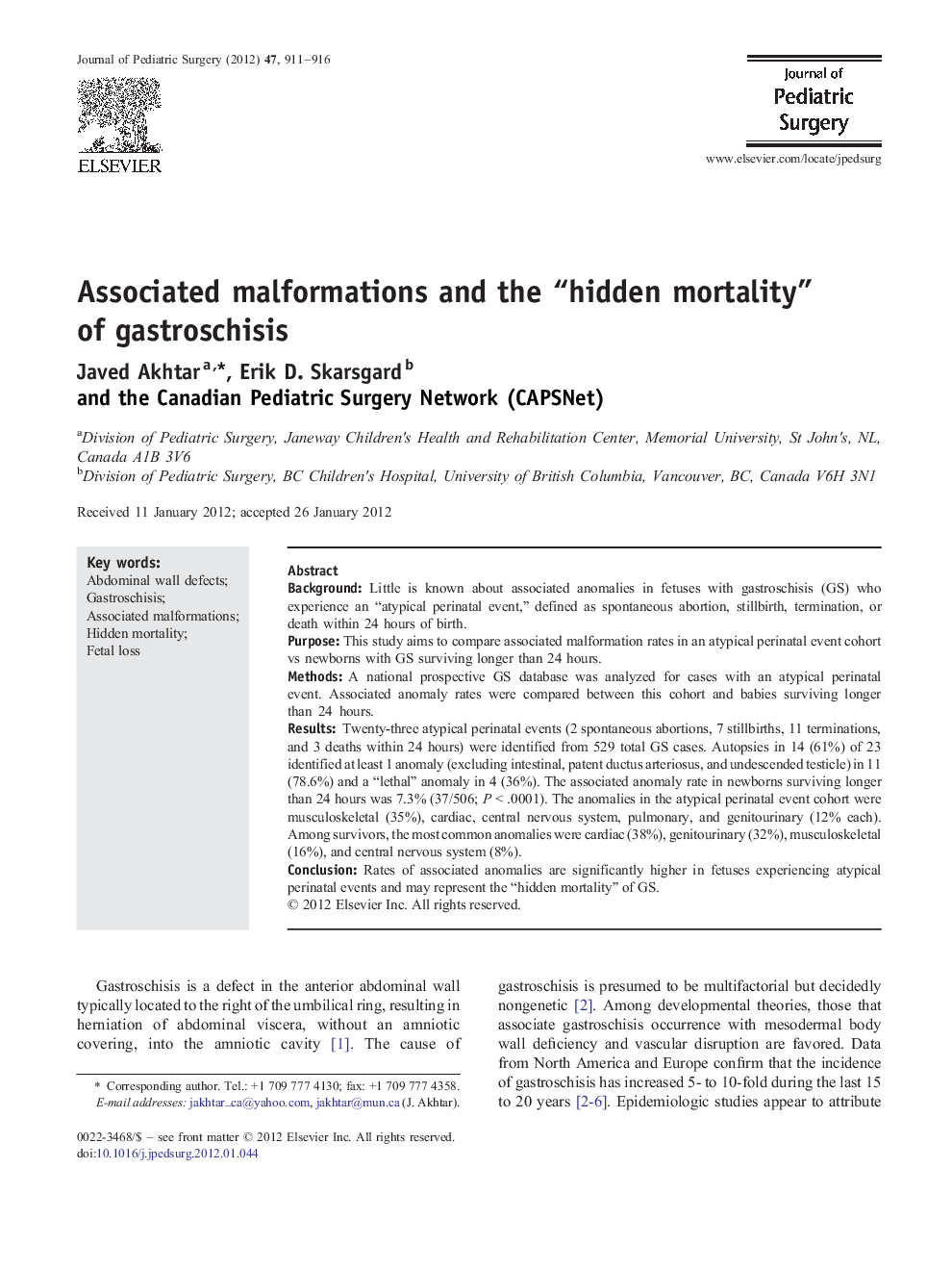| Article ID | Journal | Published Year | Pages | File Type |
|---|---|---|---|---|
| 4155849 | Journal of Pediatric Surgery | 2012 | 6 Pages |
BackgroundLittle is known about associated anomalies in fetuses with gastroschisis (GS) who experience an “atypical perinatal event,” defined as spontaneous abortion, stillbirth, termination, or death within 24 hours of birth.PurposeThis study aims to compare associated malformation rates in an atypical perinatal event cohort vs newborns with GS surviving longer than 24 hours.MethodsA national prospective GS database was analyzed for cases with an atypical perinatal event. Associated anomaly rates were compared between this cohort and babies surviving longer than 24 hours.ResultsTwenty-three atypical perinatal events (2 spontaneous abortions, 7 stillbirths, 11 terminations, and 3 deaths within 24 hours) were identified from 529 total GS cases. Autopsies in 14 (61%) of 23 identified at least 1 anomaly (excluding intestinal, patent ductus arteriosus, and undescended testicle) in 11 (78.6%) and a “lethal” anomaly in 4 (36%). The associated anomaly rate in newborns surviving longer than 24 hours was 7.3% (37/506; P < .0001). The anomalies in the atypical perinatal event cohort were musculoskeletal (35%), cardiac, central nervous system, pulmonary, and genitourinary (12% each). Among survivors, the most common anomalies were cardiac (38%), genitourinary (32%), musculoskeletal (16%), and central nervous system (8%).ConclusionRates of associated anomalies are significantly higher in fetuses experiencing atypical perinatal events and may represent the “hidden mortality” of GS.
